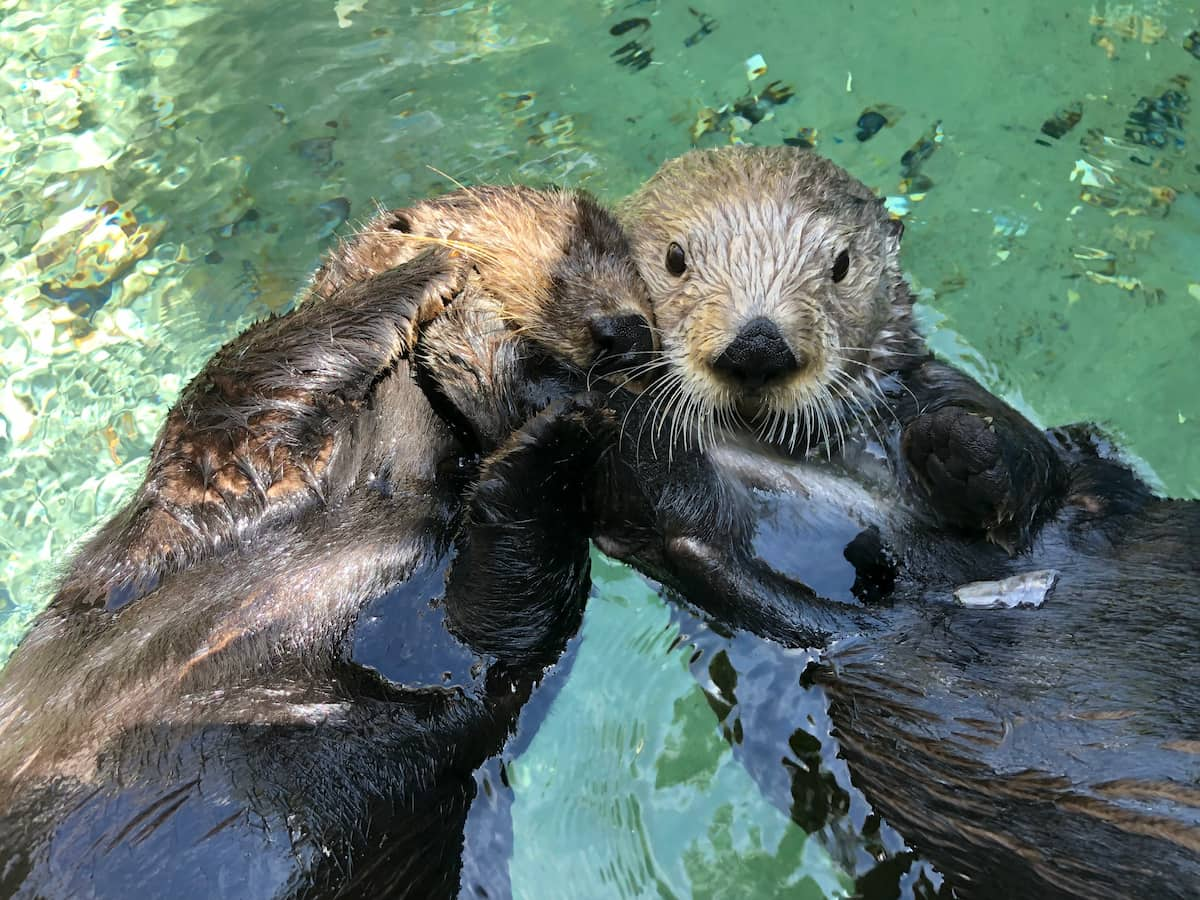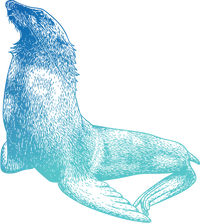Tag: Sea Otter
Saying goodbye to elderly Adaa
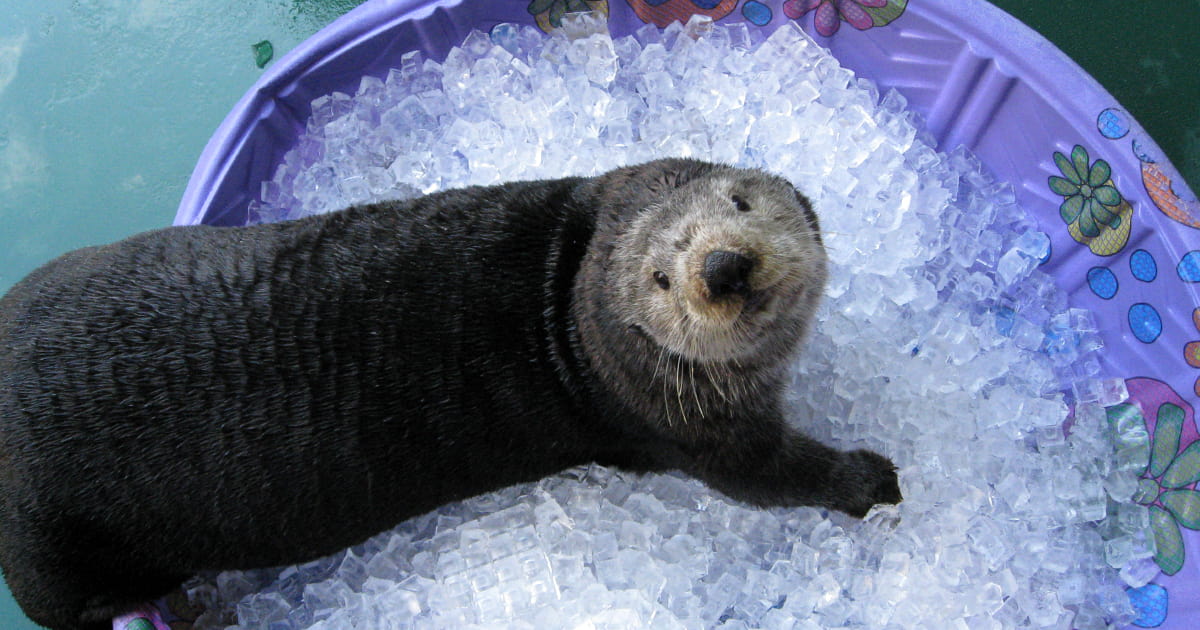
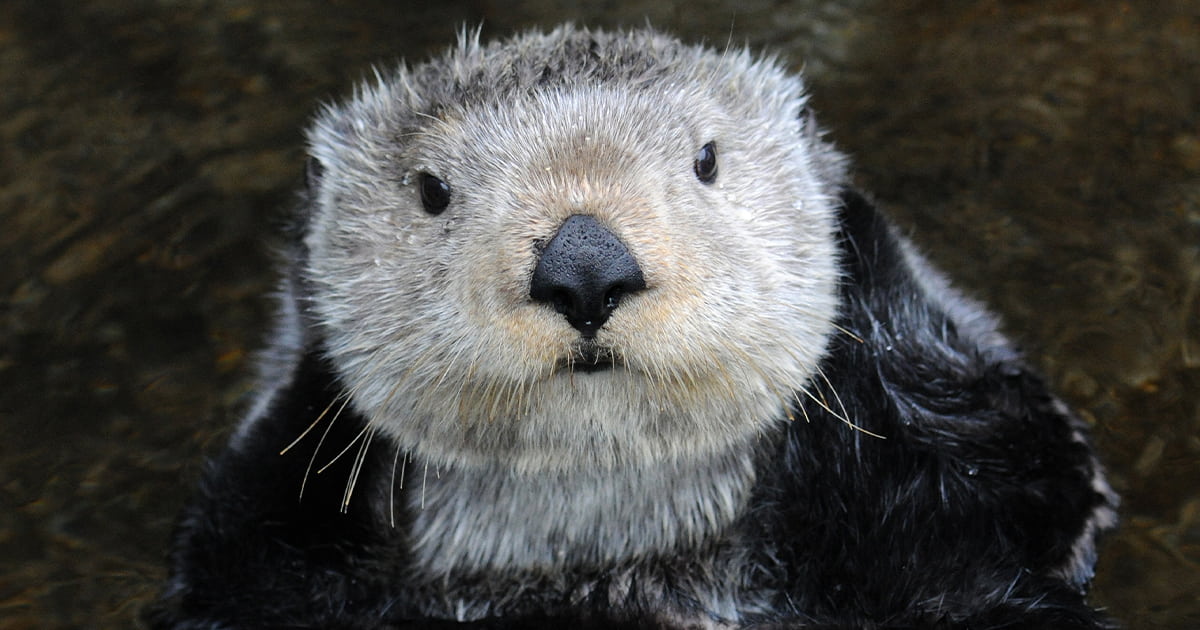
We are sad to announce the passing of Adaa, the male northern sea otter under our care, from cancer. The disease was diagnosed in mid-February and considered terminal. Adaa was treated with medications to manage his symptoms and provide him with a good quality of life for the time he had left. The staff had hoped this would give him several weeks, but his condition recently deteriorated and he was humanely euthanized on Sunday, February 27.
This beloved animal was the oldest male sea otter at zoos and aquariums in the U.S., and he became the oldest male sea otter on record in the Association of Zoos and Aquariums (AZA) “studbook” when he reached 22 years and 2 months old. (On average, sea otters in the wild live 15–20 years.) An AZA studbook dynamically documents the entire demographic history of each individual of a species—this is an invaluable tool to help us understand how individuals and groups are doing and allows us to provide the best standard of care.

Curator of Birds and Mammals Julie Carpenter describes Adaa as “a beautiful animal with a gentle way about him. He had his quirks, such as hopping with his rear flippers when on land instead of walking and making soft cooing sounds while chewing.”
Adaa, which means “come ashore” in the Aleut language, was approximately 4 months old when he was found on an airport runway at Port Heiden, Alaska, in January 2000. Julie explained this about his age: “While we don’t know Adaa’s exact date of birth, we have a very close estimate. As pups, sea otters have unique pelage [the fur covering of a mammal] and pup teeth that change as they grow. The stage of pelage and teeth growth, in addition to size and time of year, allows us to accurately estimate the age of the pup within a couple of months—sometimes even weeks or days—of birth.” At the time of his passing, Adaa was approximately 22 years and 8 months of age.
Adaa then lived at the Oregon Coast Aquarium in Newport, Oregon, until April 2004, when he was transferred to the Seattle Aquarium. In 2012, Adaa was temporarily moved to the Oregon Zoo following the birth of his daughter, Sekiu, to allow mother (Aniak) and daughter space to bond without the presence of a male. In the wild, females with pups are often found in rafts without males. Once Sekiu was older and weaned, Adaa returned to Seattle Aquarium.
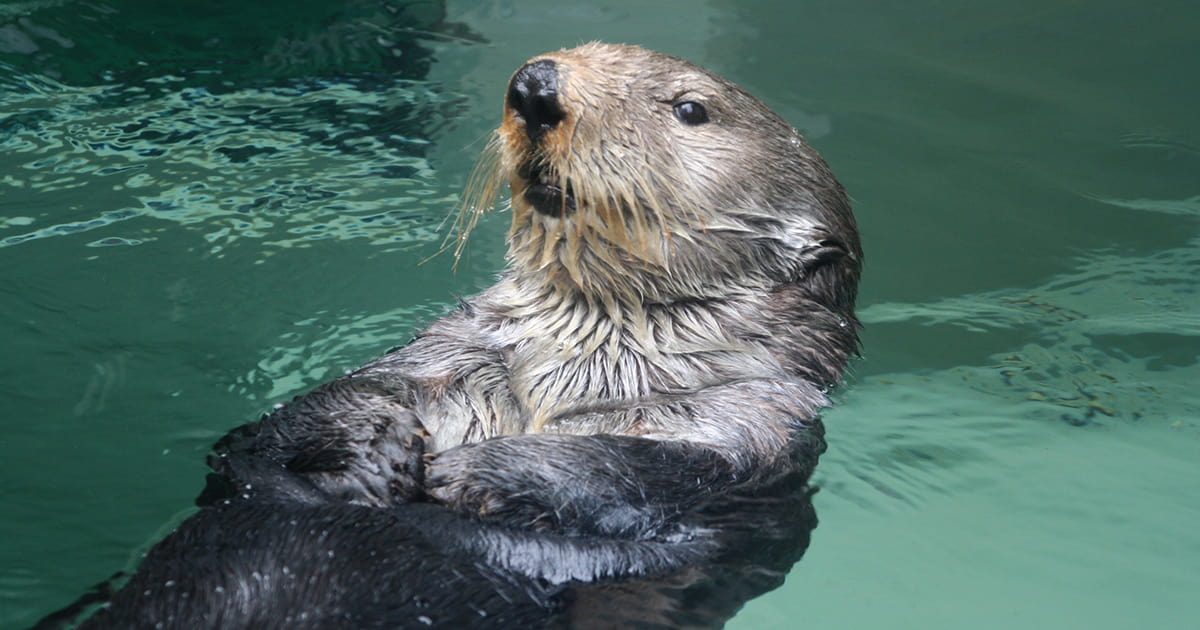
“He was a gentle male and was always amazing with the females,” says Julie. “In his older years he was often seen holding onto Mishka, a younger female, while he slept and was even seen grooming her.”
Adaa had some favorite enrichment activities, like playing with or crunching on ice and solving puzzle feeders. He will be dearly missed by the staff and volunteers at the Aquarium and by the many in-person and live-webcam visitors who enjoyed his company.
“Adaa had an enormous amount of trust in the people who cared for him,” says Senior Veterinarian Dr. Caitlin Hadfield, “particularly the animal care professionals who worked most closely with him. It was always inspiring to see that relationship. It allowed us to work together to provide the care he needed as he got older.”
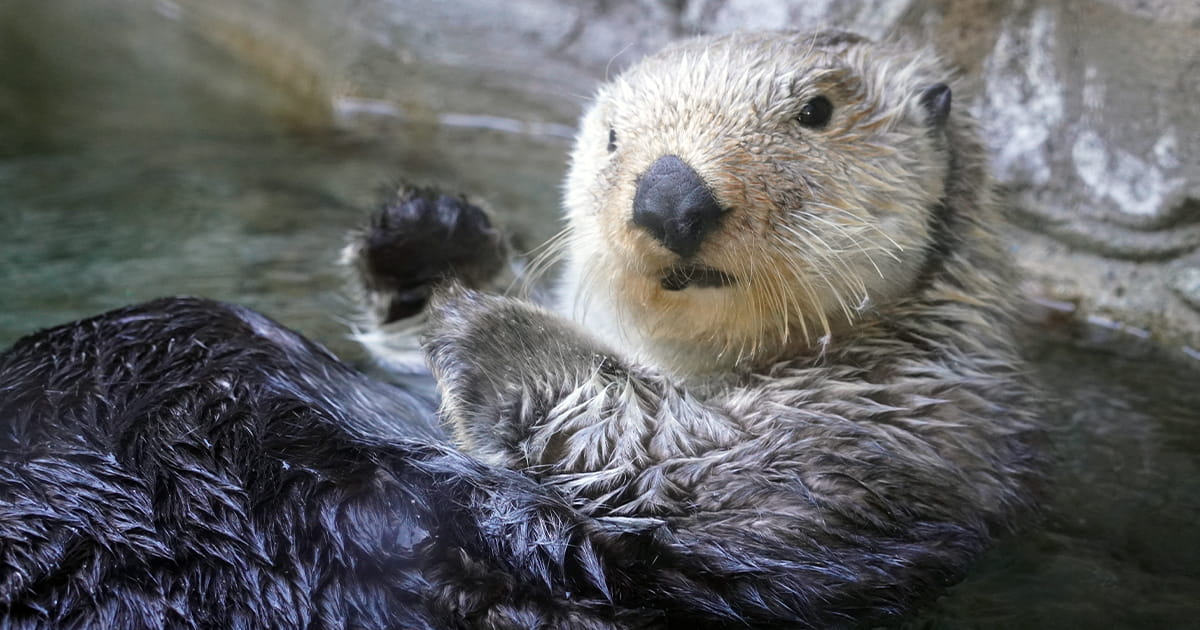
A tribute to Aniak the sea otter
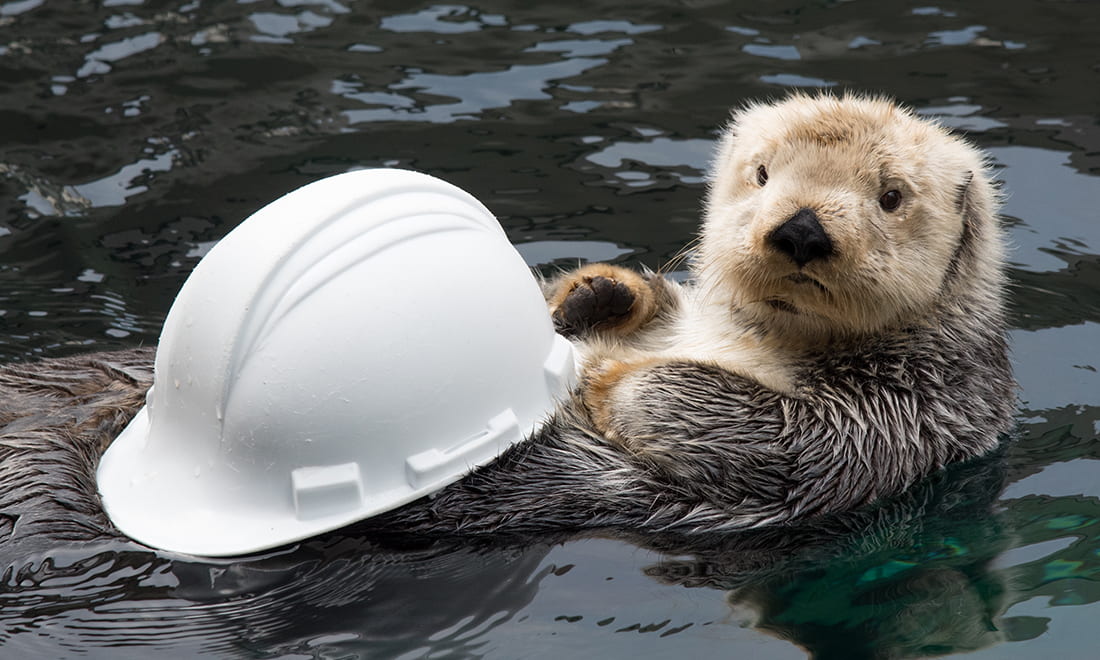
We are deeply saddened to announce the loss of Aniak, one of our beloved sea otters. Aniak was a 19-year-old female born here at the Seattle Aquarium to Lootas, our former sea otter matriarch. Aniak became a mother during her time at the Aquarium, giving birth to a male named Chugach in 2005, who moved to Pittsburgh Zoo & PPG Aquarium, and a female named Sekiu in 2012, who now lives at Point Defiance Zoo & Aquarium.
At 19, Aniak was an elderly sea otter. She had been dealing with chronic skin issues for six years, and while she continued to do all the normal sea otter things, it had been a delicate balance to maintain her comfort while also minimizing side effects from the medications needed to reduce her symptoms. Working with other sea otter veterinarians and dermatologists, we continued to adapt her care in the face of this chronic issue. In spite of the care provided, her health swiftly declined this week and the decision was made to humanely euthanize her early this morning.
This brings up the good question of how we know it’s time to provide humane euthanasia. “If an animal is in pain or distress that cannot be relieved, that decision is obvious and it is a great privilege as a veterinarian to be able to relieve suffering and provide an animal with a peaceful passing,” comments Senior Veterinarian Dr. Caitlin Hadfield. “However, just as with your dog or cat, that decision is harder with chronic relaxing-remitting health issues,” she continues. We want to give all the animals at the Aquarium the opportunity to live their best lives. To help with that, every animal at the Aquarium has regular welfare assessments to identify any opportunities to improve their well-being.
When an animal has a serious health condition or is past their expected life span, we use very frequent assessments that are tailored to that animal’s needs. For example, for a tufted puffin with arthritis, we may evaluate how well they are moving around on land and how much they explore their environment. We use these and other metrics as a base to talk about their quality of life, prognosis and the options available to us. For Aniak, we reached a point this morning where the best decision for her was humane euthanasia.
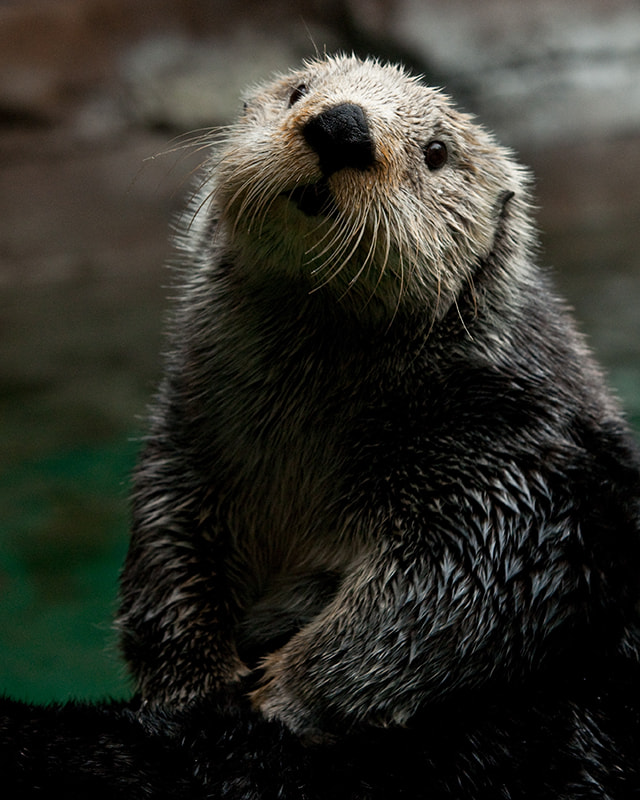
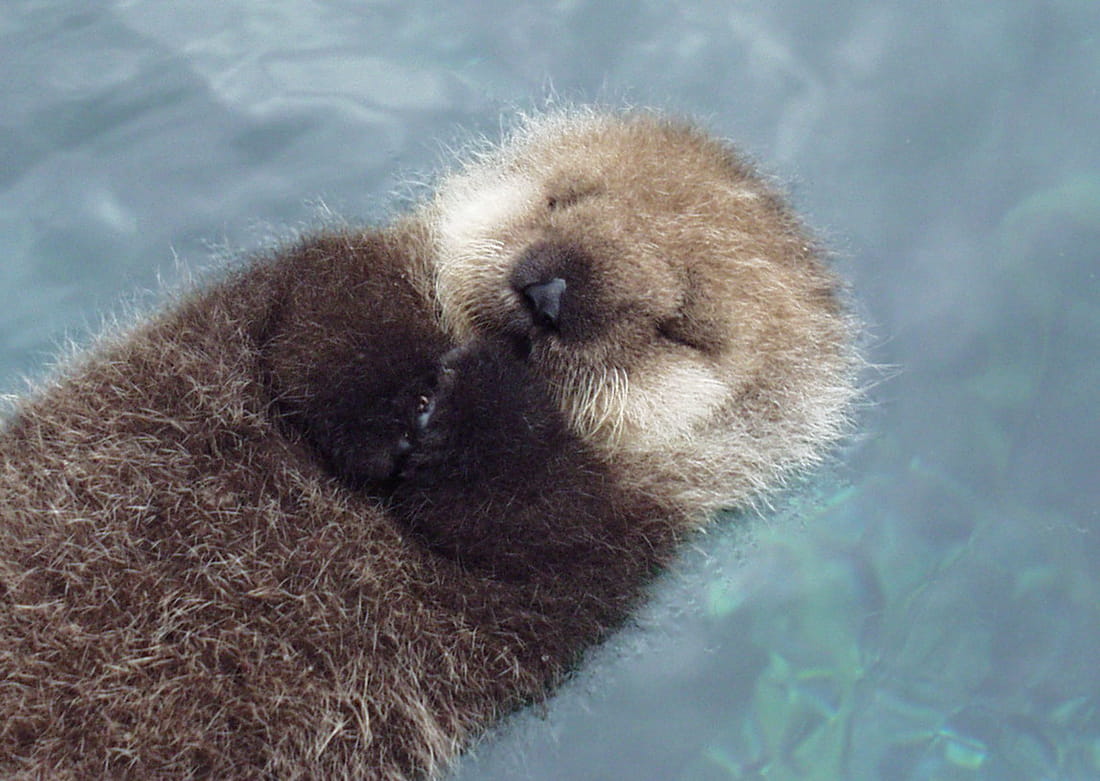
Aniak was a wonderful ambassador for her species. In addition to being absolutely adorable, sea otters are a vital part of our ecosystem in the Pacific Northwest. They feast on sea urchins, which prevents that population from eating all the kelp, which in turn offers habitat and protection to many species in our waters. Since sea otters need to eat around 25% of their body weight every day, that adds up to a lot of sea urchins, shellfish, squid, fish, crabs and shrimp.
There are around 2,800 sea otters living off the Washington coast; this is thanks to population recovery efforts after they were hunted nearly to extinction at the turn of the 19th century for their amazingly thick fur—anywhere from 500,000 to 1 million hairs per square inch, the densest fur on Earth! All that hair keeps sea otters from needing a layer of blubber to keep warm, but they do have to regularly groom their fur and blow air into it to maintain its incredible insulating qualities.
The Bird and Mammal team’s expert and diligent attention, along with the amazing veterinary care provided by Dr. Hadfield, allowed us to give Aniak the best life possible. She inspired not only our staff and volunteers but also countless people who visited her in person or watched her on our webcams. She was gentle, yet spirited, and a devoted mother, and will be dearly missed by our staff, volunteers and visitors.
We invite you to learn more about sea otters by visiting their fact sheet on our website and seeing them in person during your next visit to the Aquarium. You can also watch our sea otters in real time in their habitat via our live webcams.

Reducing oil spill risk to protect otters, orcas and more

Fossil fuels pose a huge risk to the health of our oceans. When we burn fossil fuels such as oil, coal and natural gas, more carbon dioxide goes into the atmosphere. As the ocean absorbs some of these emissions, the chemistry of the seawater changes. Ocean waters that are more acidic dissolve shells and coral skeletons and make it hard for animals to form new shells. These changes, along with ocean warming and other climate change impacts, harm marine ecosystems and the people who rely on them for their food, livelihoods and well-being.
The transportation of fossil fuels and the accompanying potential for oil spills threaten the waters of the Salish Sea every day. There are proposed projects that would further increase oil handling in Washington state, along with the chance of devastating oil spills from trains, tankers and barges. In a 2019 count by Friends of the San Juans, there were 25 proposed new, expanding or recently completed terminal and refinery projects, which would add 4,232 more vessel transits every year to and from ports in Washington state and British Columbia.
Some types of oil are light and float on saltwater, spreading out very rapidly and making the oil easily accessible to seabirds and mammals at the water’s surface. Other kinds of oils are heavy and sink, causing problems for fish and organisms on the seafloor. Animals are hurt when they inhale oil as they surface to breathe or swallow oil as they try to clean themselves. When birds’ feathers or mammals’ fur get coated in oil, it also undermines their insulation, making it difficult for them to maintain the right body temperature. Oil and gas transport in marine waterways is listed among the primary threats to the sea otter population. And it is estimated that an oil spill of 2,000,000–4,000,000 gallons may kill up to half of the remaining endangered southern resident orcas (1).
Many Seattle Aquarium staff have the federal and local training required to safely handle and care for wild marine animals in the event of an oil spill. Three of our staff are also trainers and provide annual Hazardous Waste Operations and Emergency Response (HAZWOPER-24) classes in the region with a focus on oiled wildlife response.
But we must do more than prepare for the eventuality of a catastrophic oil spill in the Salish Sea. Fossil fuels must be phased out to protect the health of our ocean and the marine species that call it home. The Seattle Aquarium has begun engaging with partners in the Stand Up to Oil coalition, a group of organizations committed to protecting Pacific Northwest communities from the health, safety and environmental threats of oil infrastructure and transport.
Over the last few months, we have raised our voice to oppose new fossil fuel infrastructure in Washington state and ensure that oil spill risks to endangered species are explicitly considered in project-approval processes. These efforts have included:
- Opposing the Kalama methanol refinery: We joined many other organizations and communities in urging the Washington Department of Ecology to deny a proposal to build and operate a methanol refinery along the Columbia River in Kalama, Washington. The project would have resulted in significant greenhouse gas emissions for the next 40 years at all points in the process—from fracking and piping the gas to its conversion to liquid methanol and then to plastics or fuel, and then the burning of that fuel. In a huge win for the health of our ocean and climate, the Department of Ecology rejected this proposal in January 2021.
- Ensuring better planning for oil spill risk: We have asked the Department of Ecology to require updates to oil spill contingency plans to better reduce the risk of oil spills to the endangered orcas.
- Expressing concerns about oil terminal expansion: There is a proposal to expand the SeaPort Sound bulk oil terminal. We asked the City of Tacoma to closely examine potential harm to the sensitive intertidal and marine ecosystems of the Salish Sea.
- Preparing for new rules for fossil fuels: This summer, the Washington Department of Ecology will develop rules for evaluating any new fossil fuel project proposals. This is an opportunity to ensure the Department of Ecology applies the best available science and social equity considerations in future permitting decisions. Be on the lookout for an upcoming action alert to help hold coal, oil and gas projects accountable for the air pollution they create.
We invite you to join the Seattle Aquarium in speaking up for the health of our ocean and climate! Get breaking news and urgent action alerts by subscribing to our policy email list.
(1) Lacy, R.C., Williams, R., Ashe, E. et al. Evaluating anthropogenic threats to endangered killer whales to inform effective recovery plans. Sci Rep 7, 14119 (2017).
